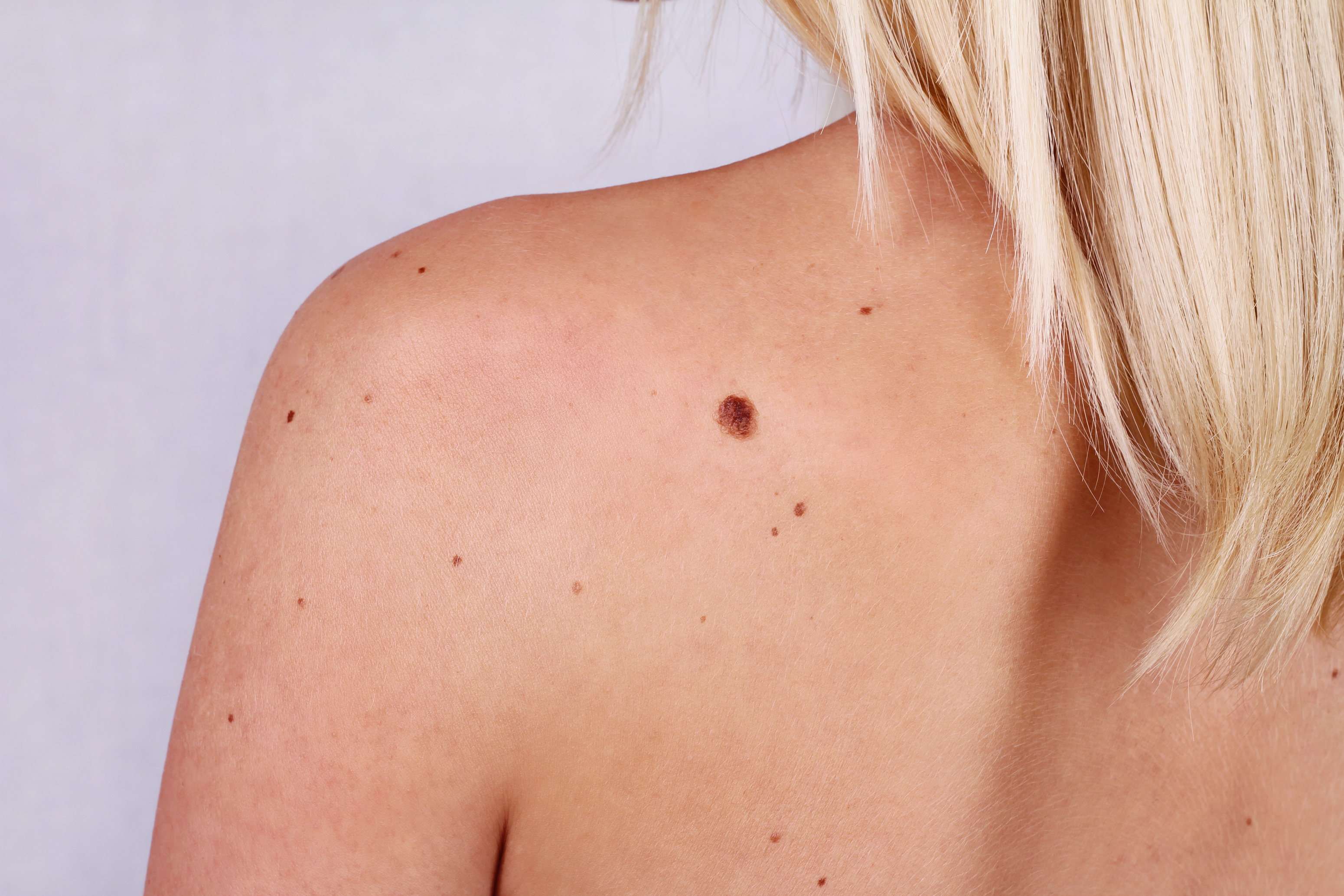By carefully tracing a line of at least two millimetres outside of and around the edges of a mole that is suspected of being a cancer, doctors can remove all of its cells and avert the need for a second surgery.
The recommendation for such a tightly-defined surgical margin is the result of a study led by researchers at Perlmutter Cancer Centre at NYU Langone Health and published online in the Journal of the American Academy of Dermatology.
According to researchers, such margin guidelines are needed because as many as two-thirds of the hundreds of thousands of suspicious skin moles removed each year in
America require re-excision (further cutting out of mole cells missed on the first attempt). Physicians warn that second procedures introduce more risk of infection, bleeding, and scarring, as well as inconvenience and unnecessary costs.
‘Although the vast majority of suspicious-looking skin moles do not turn out to be cancerous melanomas, once a decision has been made to remove a mole, there should be a clearer standard margin,’ said senior study investigator and Dermatologist, David Polsky, MD, PhD.
Currently, he said, most physicians cut out either just the darkest portion of a suspicious mole, or when removing the entire mole, opt for a very small, imprecise one millimetre margin around the mole’s edge.
‘Our study shows that a ‘one and done’ approach with a clearly defined, slightly larger margin is safer and more effective in completely removing suspicious moles with a single procedure than the current non-standardised approach,’ added Polsky, the Alfred W Kopf, MD, Professor of Dermatologic Oncology at NYU Langone and Director of its pigmented lesion section in the Ronald O Perelman Department of Dermatology.
For the study, researchers removed 151 suspicious skin moles in 138 men and women, all patients at NYU Langone, which provided all supplies and funding for the study. Most biopsies came from the arms, legs, and backs.
All patients underwent the biopsy procedure, involving complete mole removal with a two millimetre margin, between January and August 2015. Researchers then monitored the patients for close to a year and a half after their procedures and found that none had any further suspicious growths at their biopsy sites.
Lab testing showed that more than 90 per cent of biopsied moles were completely removed by using the single procedure, with 11 (seven per cent) diagnosed as melanoma, one of the most aggressive forms of skin cancer.
‘While our study did not directly compare use of the wider margin to a narrower margin, the common practice of removing moles with narrow margins and performing a second ‘clean-up’ procedure suggests a need to move toward wider margins during the initial procedure,’ said Polsky.
According to Polsky, the decision to remove a suspicious skin mole, or so-called atypical or dysplastic nevus, is complex and somewhat subjective. Physicians, he says, look at a variety of factors including the shape and internal colours of the mole, as well as how dark and uneven it is.
Keeping track of skin moles on the body is important, experts say, because people with 50 or more flat or slightly raised, circular segments of pigmented skin cells are at higher risk of melanoma than those who have fewer moles. Physicians usually remove several moles for every melanoma diagnosed, so that no cancers are missed.
Polsky said that if further data supports the current findings, he hopes that other cancer centres will also adopt his ‘one and done’ approach, and, if so, he will recommend changes to the next edition of practice guidelines issued by the American Academy of Dermatology.








